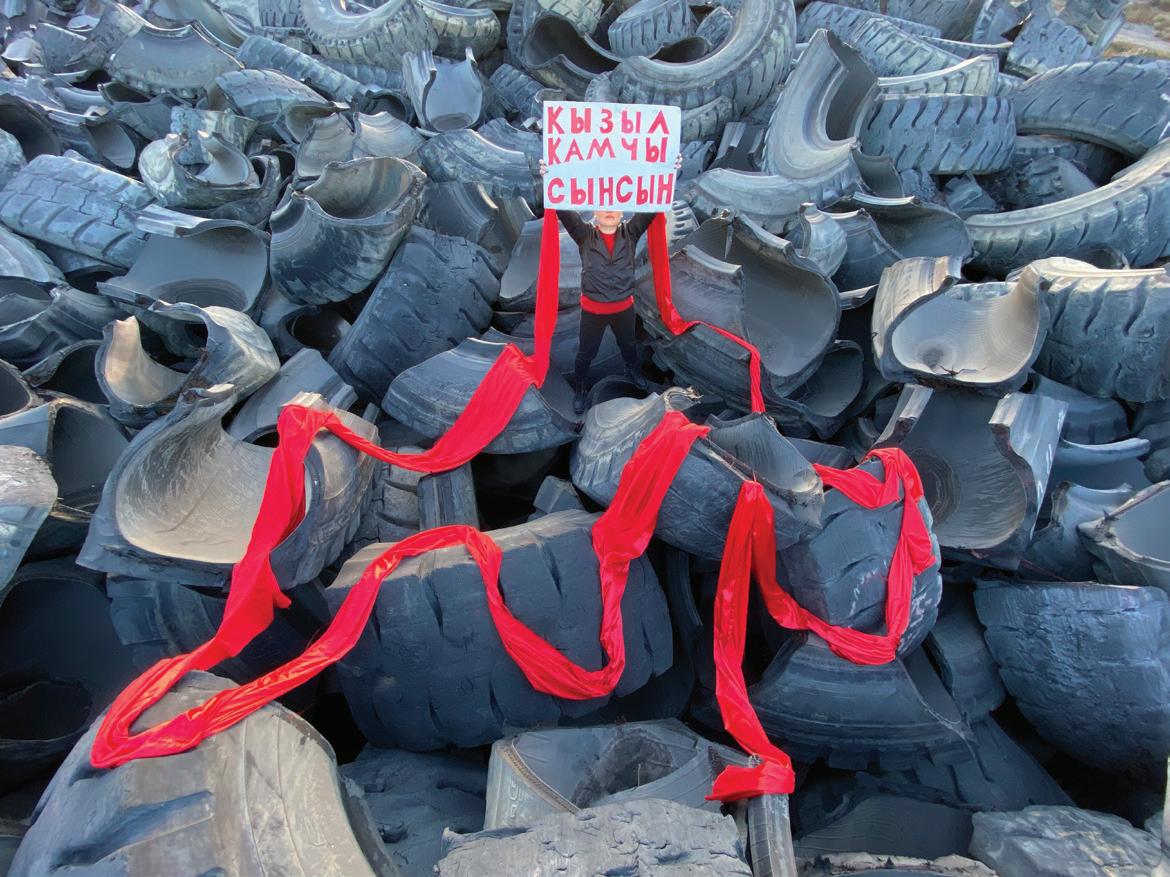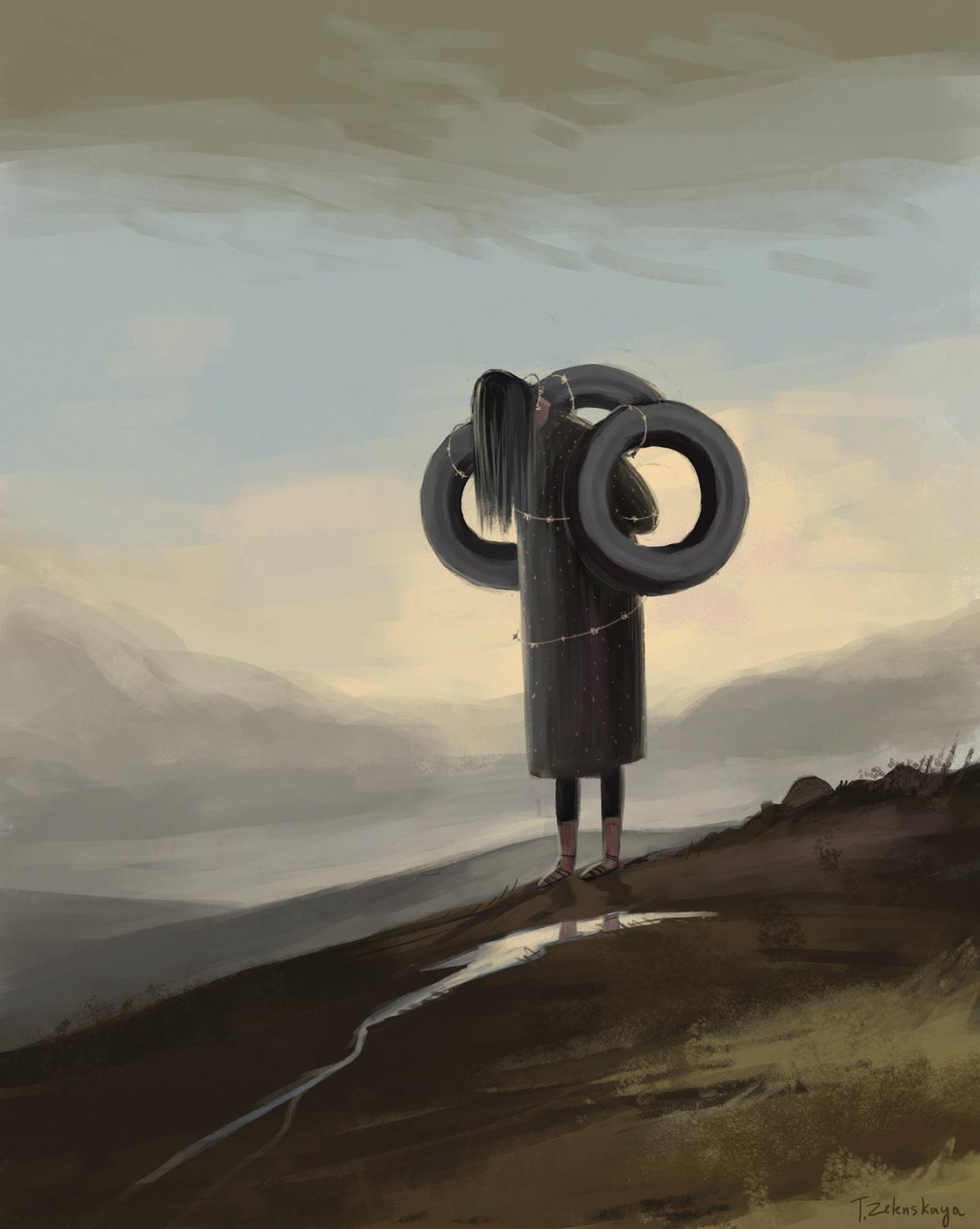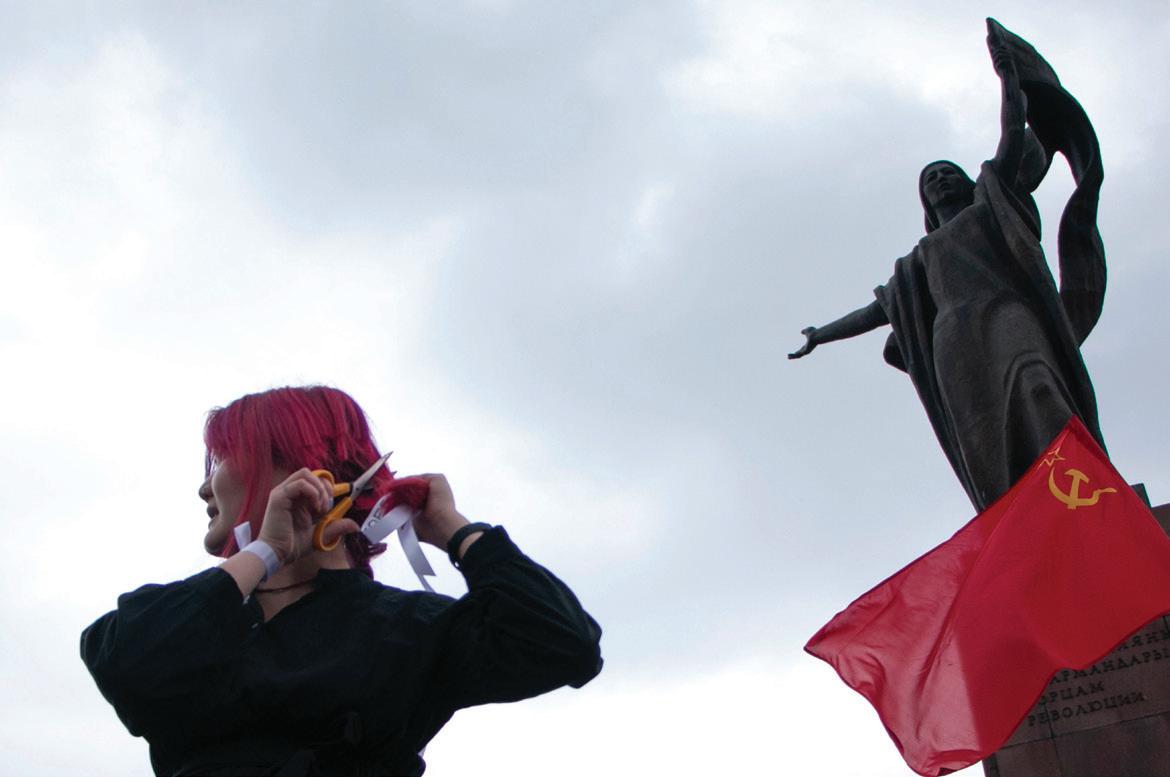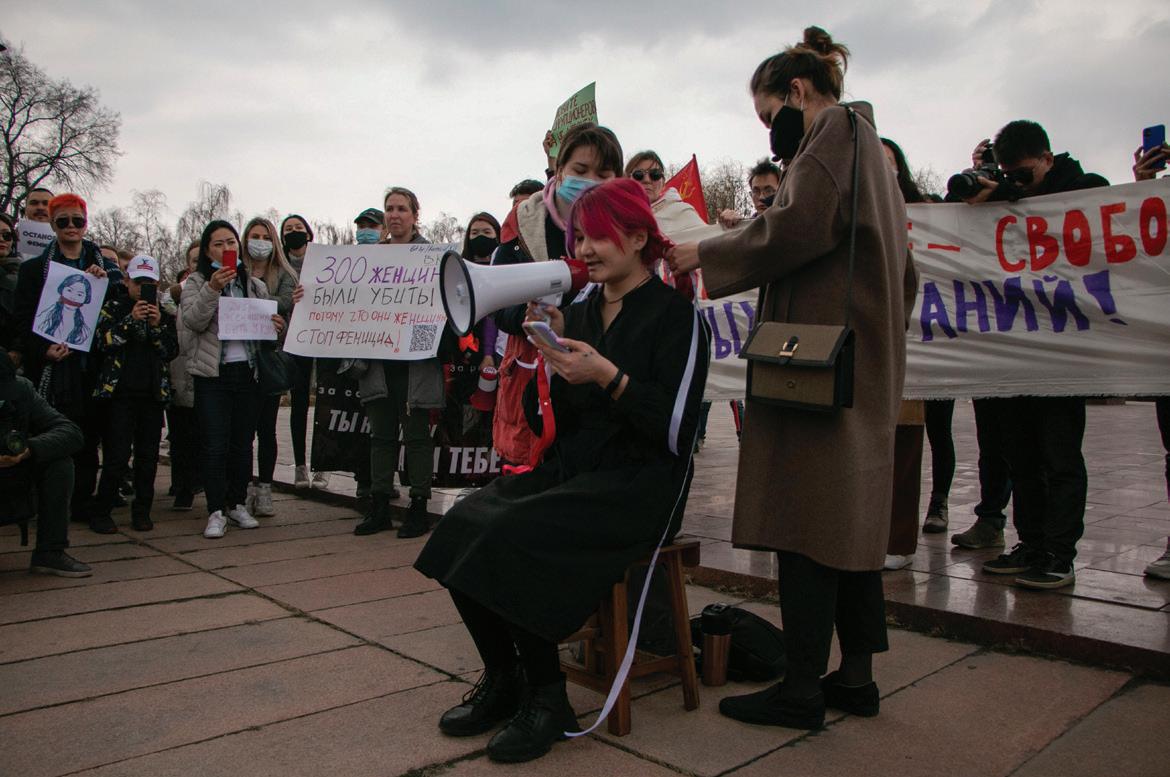
7 minute read
Part 1. Gender and Women’s Rights
In June 2020, a shocking case of domestic violence shattered Kyrgyz society. A video of a man torturing his wife — in which she is beaten up and has a bucket of cold water poured on her while being forced to wear heavy car tires filled with stones — was spread on the internet. The couple lives in the small village of Suzak. After the woman filed a police report, the husband was detained for 15 days, however she later recanted and the case was closed. Such outcomes are often the case when the victim is blamed and coerced into silence by both family members and the police as a result of social norms and the widespread idea that domestic violence is a family matter.
Equal rights for women, non-binary and trans* people do not exist anywhere in the world. However, in some parts of the globe, these groups are deprived of basic needs and freedoms in both the private and public spheres. In Kyrgyzstan, despite its illegality, the practice of ala kachuu – bride kidnapping – still remains a widespread problem. Young girls usually cannot escape from their abductors and are pressured into marrying a stranger. For many, marriage at a young age forecloses educational and professional opportunities later in life. Bride kidnapping is often accompanied by rape and other forms of violence. According to UN Women statistics, experiences of some form of gender-based violence have been reported by around 30% of women in Kyrgyzstan and Tajikistan, and nearly 20% of women in Kazakhstan. While there is no official data available on genderbased violence in Uzbekistan and Turkmenistan, reports suggest that the issue is a major problem in these countries as well. One can argue that these statistics may be even higher than officially claimed. For comparison, Swedish statistics are also unsettling: more than a third (34%) of all Swedish women have experienced sexual violence at least once since their fifteenth birthday. However, in Sweden, different definitions of gender-based violence are used in addition to more or less responsive institutions. This leads to a higher percentage of registered cases. In Central Asia, the lack of institutional and governmental support of women, in regards to inequality and violence, makes it impossible for them to report and escape abusive environments.
Advertisement
The story from Suzak gained a wide response in the Kyrgyz society, especially among activist and artistic circles:
[This is] surreal. I don’t even want to imagine that somewhere women live in such conditions. I didn’t read the articles. I don’t want to remember names and other details. I don’t want it to become a part of my life. I just want the bastard to burn in hell.
— Alongside these words, artist Tatyana Zelenskaya posted an artwork A Woman from Suzak (2020) on her social media.
Zelenskaya depicted a woman standing alone on the hill. Her hands are tied behind her back and car tires weigh down her upper body. We do not see her face; she is broken, dehumanized by the atrocities of her husband and the government’s inaction.
Kyzyl Kamchy Synysyn (2020) by Altyn Kapalova provides us with a more optimistic call to action. In this work, the artist stands on a field of broken car tires, as a reference to the Suzak case, holding a sign that says “Let the Red Whip Break”. In the Kyrgyz language, the term kyzyl kamchy, or “red whip”, is a generic term that is used to describe men who beat women. Kapalova uses this sign as an artistic intervention and puts it out everywhere — in villages, at rallies, in scorched fields, on roadways, etc. She has been doing this since the 2020 Women’s Day March in Bishkek, Kyrgyzstan; the event was infamously stormed by groups of conservative, right-wing men, who were followed by police officers that brutally dispersed the marchers. In Central Asia, feminist movements are neither supported nor welcomed by the state. Furthermore, such movements are blamed for the introduction of so-called “western values” and are thus perceived as an assault on the traditional values of Central Asian societies. Discourses containing terms such as ‘domestic violence, ‘nondiscrimination’ and ‘gender topics’ are thereby discredited for breaking the traditions of the country. Despite this pressure and a lack of support in some cities such as Bishkek and Almaty, Women’s Marches are still happening.
In 2021, Ayday Tokoeva presented a performance titled No Femicide! (2021) during the march. She began her performance with the following words:
Kyrgyz people say – “girls should be respected and revered for their forty braids”. But for some reason you rarely hear that from people nowadays. Today more often you’ll hear – “girls are banned from forty different places”.
Simultaneously, two other women braided Tokoeva’s hair and tied it with white ribbons on which the motives of the men killing their wives or partners were written.
In this case she was beaten by her husband and dragged into a cold house, and when his heart had measured out [the love for her], he set her on fire to hide his shame,
Tokoeva continued. Finally the artist cut her braids in protest against the violence of the patriarchy.
Over the course of the past 10 years, CAG has supported initiatives, organizations, and activists in their struggle to uphold and promote the rights of women and the LGBTQ+ community in Central Asia. CAG’s collaborations are tailored to the needs of our partners in the region. For example, in 2018 CAG supported the initiation of the first 8th of March demonstration in the Kyrgyz city of Osh together with our partner organization Novi Ritm. The demonstration resonated in the southern region of Kyrgyzstan and sparked debate regarding the rights of women and also laid the foundation for the next year’s demonstrations. CAG also provided support to a network of organizations in the region working with questions about gender and cyber security routines to ensure that activists and organizations are able to work in safer environments. It is important for CAG to create long-term collaborations that are based on mutual trust, common ideas, and a common mission. This sustainability is what we have successfully achieved during our years of working in the region.
Altyn Kapalova (Kyrgyzstan, b. 1983)
Let the Red Whip Break (2020)
Kyzyl Kamchy Synysyn ( in Engl.: Let the Red Whip Break) is a series of art-protests against patriarchal violence. The Red Whip is an euphemism for violent men who beat their wives and partners. Artist and activist Altyn Kapalova was detained by the police during the Women’s March in 2022 and deprived of her right to protest. Since then she puts up this poster everywhere: in villages, at rallies, in scorched fields, on roadways, etc.




Tatiana Zelenskaya (Kyrgyzstan, b. 1984)
A Woman from Suzak (2020)
A Kyrgyz artist and illustrator Tatiana Zelenskaya created her piece A Woman from Suzak as a reaction to a violent and shocking case of domestic violence that took place in a small village of Suzak. A video of a man torturing his wife — by beating her up and pouring cold water out of a bucket on her, while she is forced to wear heavy car tires filled with stones — was spread on the internet and shattered Kyrgyz society.


Ayday Tokoeva (Kyrgyzstan, b. 1994)
No Femicide! (2021)
On March 8, 2021 a peaceful protest for women’s rights took place in Bishkek, the capital of Kyrgyzstan. Around 600 people took part in the march. It concluded with a performance by activist Ayday Tokoeva titled No Femicide! which aimed to raise awareness of gender-based murders in Kyrgyzstan. Photo documentation by Lex Titova.
Ayday Tokoeva (Kyrgyzstan, b. 1994)
No Femicide! (2021)
Tokoeva reads her manifesto, while two other women braid her hair with white ribbons on which the motives of the men killing their wives or partners were written. Photo documentation by Lex Titova.








